First Study of Hydro-Electric Completed
First study of the hydro-electric potential of the Churchill and Nelson rivers is completed with involvement of the Federal government.

Hydropower has deeply impacted First Nations and Métis communities in Manitoba, altering once-thriving lands, waters, and traditional ways of life. The flooding of territories and communities, dam construction and operation, and hydro corridors have all contributed to the destruction of vital social and environmental ecosystems, disrupting fishing, hunting, and gathering practices. Promised partnerships and economic prosperity are more myth than reality with First Nations struggling to work with a crown corporation that consistently fails in its duty to consult and be accountable and respectful in its operations.
Despite the historical and ongoing impacts of hydropower, the fight for energy justice continues as Traditional Knowledge Keepers, Elders, and community leaders advocate for a future that respects Indigenous rights, lands, and traditions, while also acknowledging the true cost of hydropower.
If you “got power”, you can make a difference.


By flooding rivers to create reservoirs, thousands of square kilometers of land has been submerged. This leads to the release of methane as vegetation decomposes underwater; the loss of unique and valuable wildlife habitat; and more (see above). Reservoirs are used as water storage, meaning the flow of rivers and even lakes is controlled by Manitoba Hydro instead of natural seasonal processes. Fluctuating water levels are pushed to extremes in often failed attempts to maximize water flow and therefore, profitability. Policies such as the Augmented Flow Program, allow for this unnatural water fluctuation causing vast erosion and destabilization of thousands of kilometers of shoreline.


Lake Sturgeon (Namay)
Lake Sturgeons are one of the oldest living species on Earth, and they are disappearing. These powerful water beings have survived for over 200 million years. But today, they face extinction due to hydroelectric development, habitat destruction, and the provincial government’s refusal to act.
Some of our oldest relatives live in the deep, slow-moving waters of our rivers: the Lake Sturgeon.
They are sacred beings, respected by Indigenous Nations across Turtle Island as teachers, timekeepers, and carriers of story. For generations, they have guided our ceremonies, fed our families, and anchored our spiritual relationships with the water. They represent our long histories on these lands and water and are a part of our future. The Fish Dance honours their return. The Sturgeon Moon, Namebine-giizis, signals a time of connection and renewal. Their broth carries medicine. Their presence carries meaning.
Elders speak of a time when the rivers were full, where sturgeon were so plentiful that you could walk across their backs. Today, their absence is felt not only in the water but also in our hearts and communities. As the sturgeon disappear, so too do the teachings they carry; so too does our ability to live in right relation with the waters that sustain us. The sturgeon is an indicator species, a protector of ecosystems and a mirror for the well-being of our people. When the sturgeon began to vanish, our waters changed. Our bodies changed. Our youth became disconnected from teachings that once flowed as freely as the river itself.
Indigenous science must lead the protection of sturgeon. Our knowledge is not new. It is intergenerational, land-based, and guided by spiritual responsibility. We do not see sturgeon as a resource. We see them as kin. We do not manage them. We remember them. We care for them. And now, we rise to protect them.
Sturgeon have been harmed by overfishing and ecological disruption, but hydro development has accelerated their decline. Since the Churchill River Diversion in 1976, massive water flow reductions have transformed a once vibrant, fast-moving river into a slow, degraded system. This has devastated spawning grounds and habitat, with serious consequences for sturgeon survival.
Sturgeon reproduce slowly, with females maturing only after 15 to 20 years. Restoration, therefore, cannot be rushed. Many outside of Indigenous communities find it difficult to commit to the long timelines required for meaningful recovery. Yet for us, this is precisely the point. As Indigenous Nations, we understand that the restoration of our relations with the land and water will never be accomplished in a single generation. Our responsibility is to begin, to carry, and to pass on the work. Like the threads of a star blanket, each generation weaves new layers, connecting past, present, and future. The fact that sturgeon may not reach harvestable numbers for another century may not be ideal for Western conservation. Still, for Indigenous people, that is part of the sacred generational responsibility of passing down knowledge.
The decline of sturgeon mirrored the illness spreading through our waters. If we lose the sturgeon, we lose a sacred relationship that has lasted millennia. Protecting Namay means restoring our relationships with the water, land, and each other—for today and for the next generations.
We will not stand by while our ancient relatives vanish. We demand action now.
We are calling on the Government of Manitoba to:
1. List Lake Sturgeon as endangered under the Endangered Species and Ecosystems Act immediately.
2. Protect sturgeon habitats, spawning routes, and river systems from hydro development and industrial disturbance.
3. Include Indigenous Nations, laws, and knowledge in all conservation planning and decision-making processes.
4. Uphold the inherent rights of sturgeon as sacred beings, not commodities.
Because power should never come at the cost of extinction!
Sign the petition to protect sturgeon and support Indigenous-led efforts to safeguard their future. Click here.
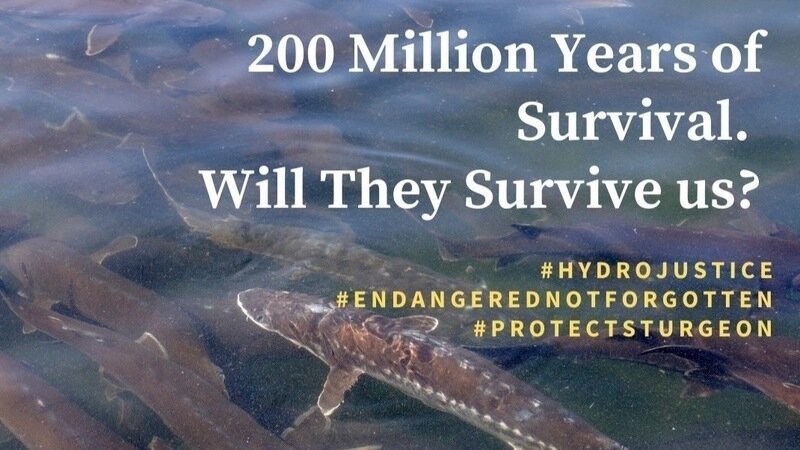
Other ways you can get involved:
Take part in the Interfaith Council on Hydropower’s Sturgeon Marking Project and stencil the sturgeon on hydro poles in your neighbourhood to remind Manitobans that we are inter-connected with what we consume.

In 2026 the Churchill River Diversion and Lake Winnipeg Regulation final licenses will come up for renewal after 50 years of operation. During these 50 years Manitoba Hydro has operated without proper consultation or engagement with the Indigenous communities impacted by these projects, which continue to cause deep and lasting harm. In 2026, without change, Manitoba risks rubber-stamping another 50 years of unchecked damage.
We can’t let history repeat itself.
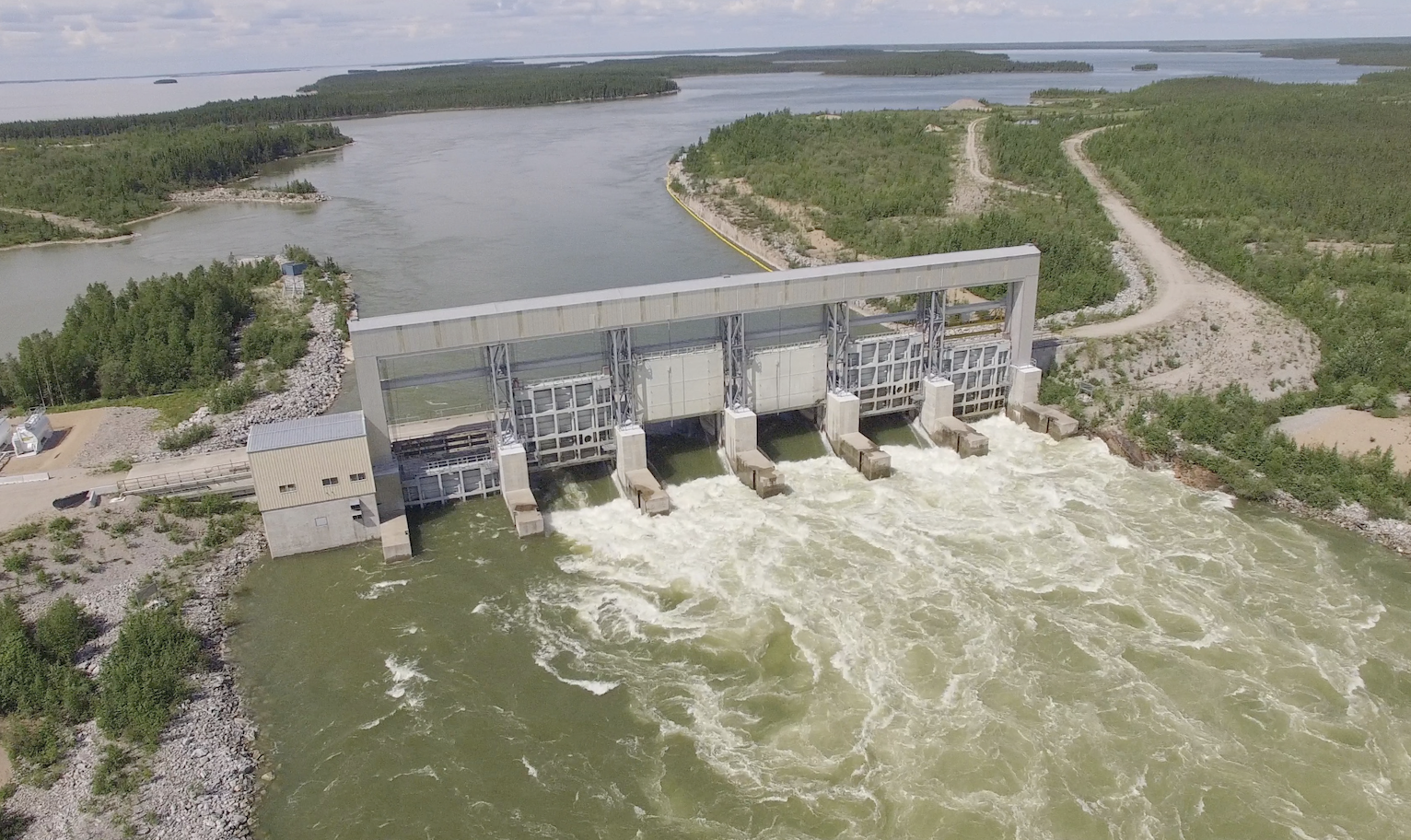

Completed in 1976, the Churchill River Diversion (CRD) redirects about 75% of the Churchill River’s natural flow, against nature into the Nelson River to boost hydroelectric generation.
CRD is a major part of Manitoba Hydro’s northern system, involving structures like the Notigi Control Structure and the Missi Falls control structure and an artificial channel, called the South Bay Diversion Channel. A channel blasted out of the Precambrian Shield.
Originally authorized in 1973 through an “Interim License” under the Manitoba Water Power Act, the CRD was meant to undergo a full review before final licensing. That never happened. For 50 years, Hydro has operated under deviations of this Interim License and not the original terms.
But the major problem isn’t just the outdated license—it’s the Augmented Flow Program (AFP). The CRD Final Licence issued in 2021 is the AFP with the mitigation clause intentionally removed. The terms of the Interim Licence have been ignored. A Licence to Destroy!
The Lake Winnipeg Regulation (LWR) is a flow regulation project that increases Lake Winnipeg’s outflow capacity by approximately 50 percent. Manitoba Hydro was granted allowance to control the water level and water flow of Lake Winnipeg, Playgreen Lake, and Kiskittogisu Lake. The main goal of this project is to increase power generation along the Nelson River, and Manitoba Hydro does this by reversing seasonal flows as power demand is highest in winter, but water flows are greatest in spring. It is also said to help reduce flooding and drought.

Infrastructure for this project consists of the Jenpeg Control Structure, which regulates the outflow of the lake through the west channel of the Nelson River, Kiskitto Inlet Control Station at the outlet of Kiskitto Lake, and Black Duck Control Station north of Kiskitto Lake. As well as four diversion channels which increase the outflow capacity of the Lake Winnipeg: Lake Winnipeg to Playgreen Lake, Playgreen Lake to Kiskittogisu Lake, a by-pass channel at Ominawin Rapids, and later the Ksipachewuk Channel Improvement.
Manitoba Hydro’s use of Lake Winnipeg as a natural reservoir for hydroelectric development was authorized in 1966, after financial investigations were carried out by the federal and provincial governments. Further authorization for the project was issued through an Interim License 1970 and a Supplementary Interim License in 1972 under the Manitoba Water Power Act. Following the completion of the Jenpeg Station in 1976, operation of LWR began. In 2021, a final license was issued that expires August 1st, 2026.
After nearly 50 years of operation, there has been no environmental assessment process carried out in respect to the LWR project, minimal consultations with affected Indigenous communities, and a general disregard for public concern. The combined effects of activities related to the LWR project pose fundamental challenges to the maintenance of a healthy, functioning ecosystem in and around Lake Winnipeg.
In July 2022, Manitoba Hydro submitted the Renewal Application for an extension of its rights under the final license. This License renewal would extend the commercial use rights for the LWR for up to 50 more years, which would intensify the impacts of this project.
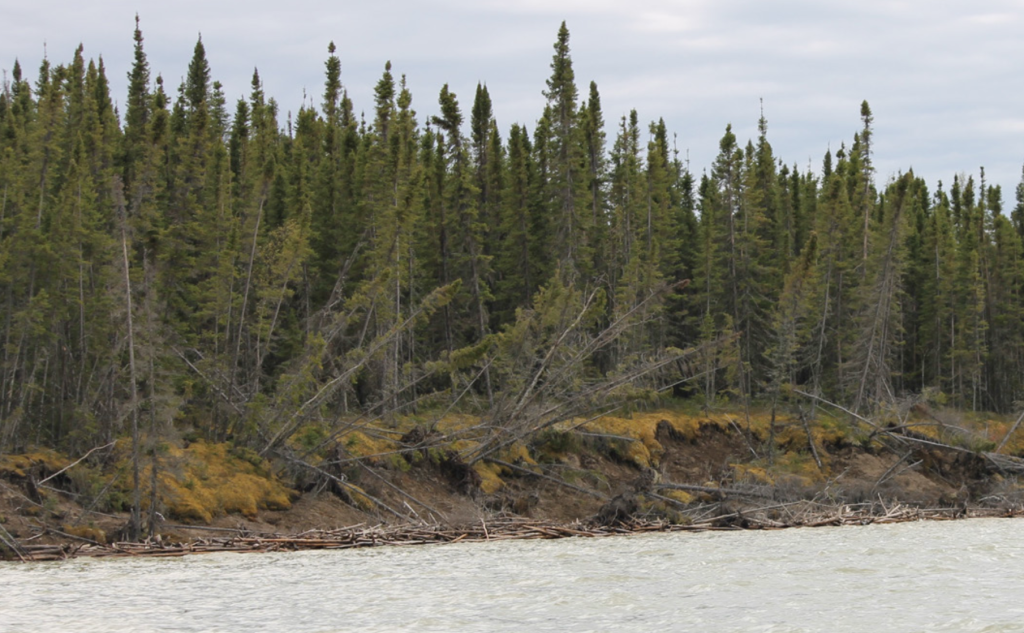
Since 1986, Manitoba Hydro has operated under the Augmented Flow Program (AFP)—an annual deviation from the terms of the original 1973 Interim License for the CRD.
It began in 1978, when Manitoba Hydro requested permission to test expanded water level operations. By 1986, these tests were formalized into the AFP, quietly replacing the original license terms without any consultation or consent.
Each year since then, the province has legitimized Hydro’s expanded operations through brief letters of authorization—often just a few sentences long with a rubber stamp. These approvals allow Hydro to:
The consequences have been devastating:
Communities like O-Pipon-Na-Piwin Cree Nation and Tataskweyak Cree Nation have been hit hard. South Indian Lake was forcibly relocated in the 1970s, and the homes provided were unfit for the northern climate. Community members report deep cultural loss, disruption of traditional livelihoods, and intergenerational trauma.
There has never been a public hearing, scientific assessment, or community consultation about the AFP. Civil servants in Winnipeg approve these changes without ever visiting the impacted communities.
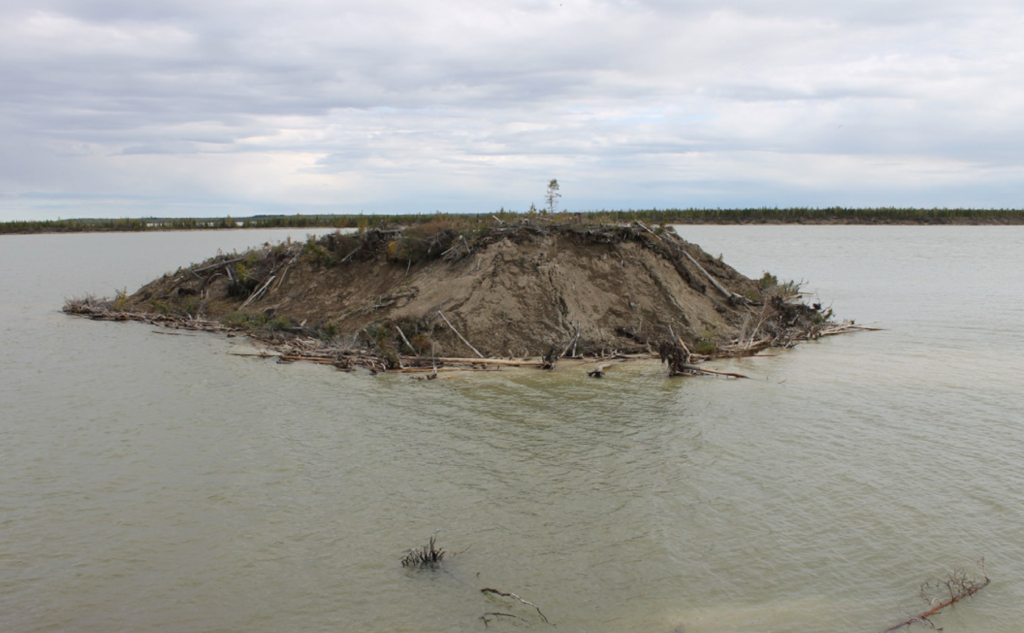

Watch Manitoba Hydro Is Water Drunk to learn more.
The video features interviews with Les Dysart who shares his frustration and anger with Manitoba Hydro’s lack of communication and consultation with them. He accuses Manitoba Hydro of being “water drunk” and “greedy”, ignoring their concerns and rights for over 40 years.
The video features interviews with Les Dysart who shares his frustration and anger with Manitoba Hydro’s lack of communication and consultation with them. He accuses Manitoba Hydro of being “water drunk” and “greedy”, ignoring their concerns and rights for over 40 years.

Manitoba Hydro’s Interim License was supposed to trigger a formal review process. It didn’t. Instead, Hydro has expanded its operations under the same outdated license for half a century—without updating any legal, environmental, or community oversight frameworks.
The AFP, now essential to Hydro’s operations, has never undergone environmental or financial scrutiny. Every year, the government rubber-stamps it without public notice or transparency.
Indigenous communities—those most impacted—were never consulted. Their treaty rights and jurisdiction over lands and waters have been routinely ignored.
What Does This Mean?
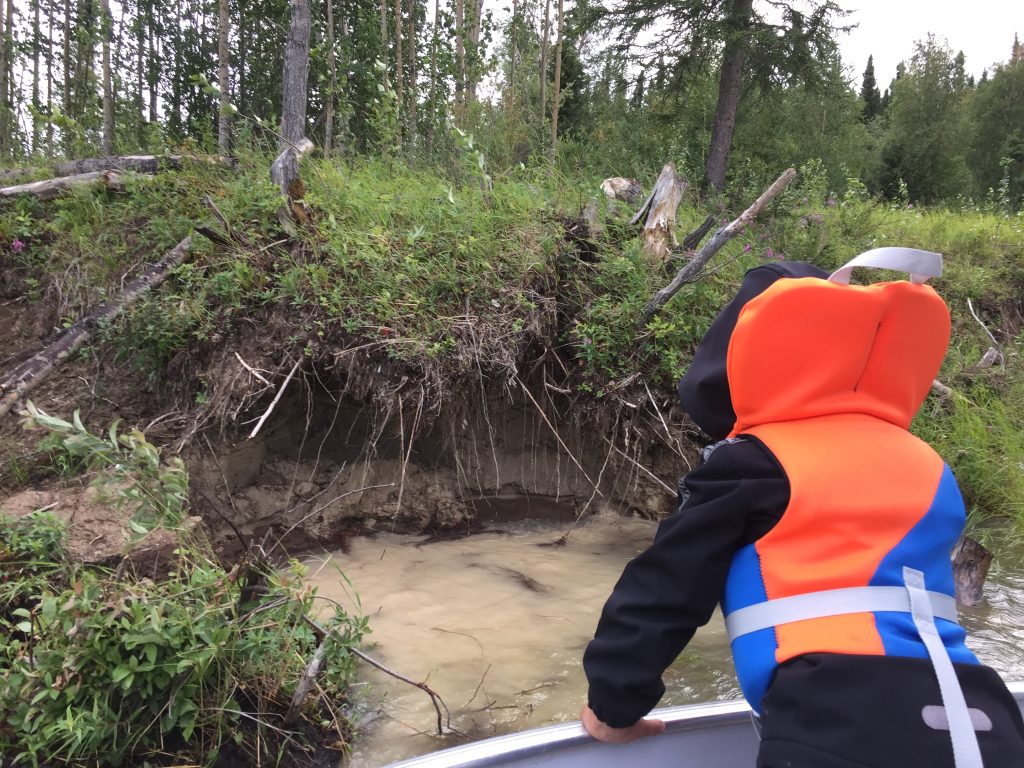
For nearly 50 years, Manitoba Hydro has been allowed to operate a massive hydroengineering project outside of legal and scientific oversight. The province’s refusal to conduct proper licensing and environmental reviews has made it nearly impossible to hold Hydro accountable.
Meanwhile, Indigenous nations are left out of decision-making and forced to live with the consequences—ecological destruction, economic collapse, and cultural loss.
Watch Augmented Flow: License to Destroy to learn more.
Boating around South Indian Lake with his dad and son, Les Dysart points out the ravaged shoreline. Waterlogged debris lurks dangerously just below the surface. The lake is treacherous for the O-Pipon- Na-Piwin Cree nation (South Indian Lake) who were once one of the wealthiest lake fisheries in North America. Elders and community members describe the turbulent engineered flooding that has shut down the fishing industry, drowned their homes, washed away historical and sacred sites and forced relocation.
Meanwhile, Indigenous nations are left out of decision-making and forced to live with the consequences—ecological destruction, economic collapse, and cultural loss. Community members share their stories:


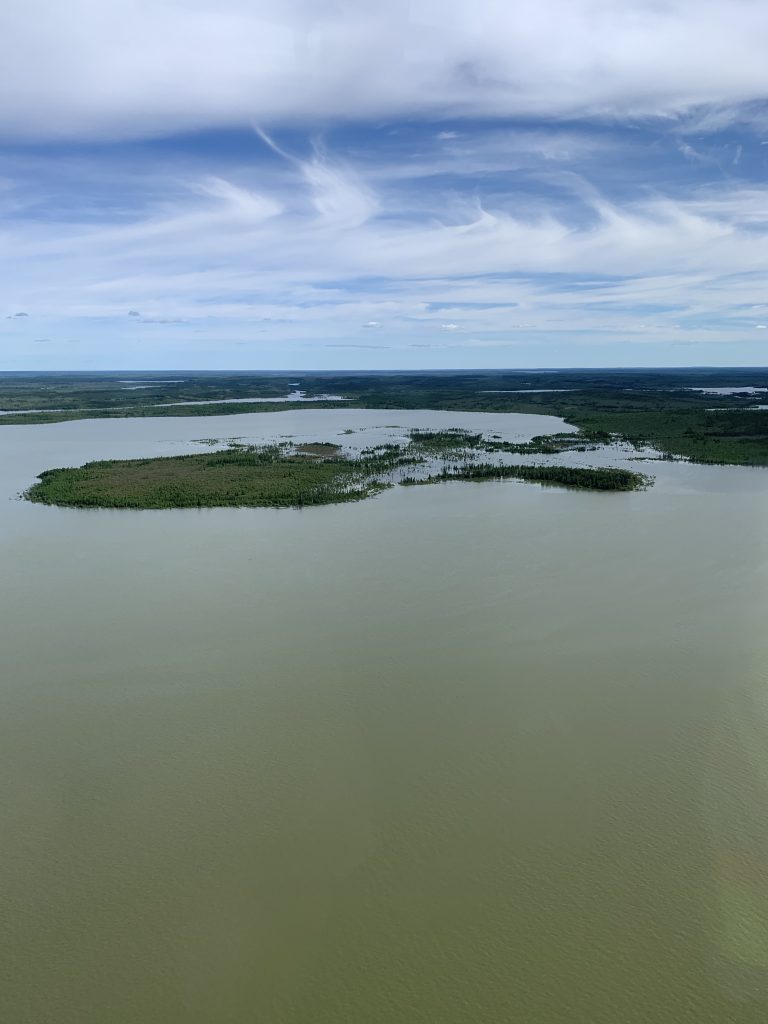
In 2026, Manitoba Hydro’s license for the Churchill River Diversion (CRD) reaches a major milestone—a project that has caused some of the most widespread environmental and cultural damage in Manitoba’s history.
For nearly 50 years, Hydro operated under an Interim License, never subjected to proper review, environmental assessment, or community consultation.
In 2021 the current CRD Final Licence was granted with the clear and vehement objection of O-Pipon-Na-Piwin Cree Nation and without meaningful and proper Sec.35 consultation. It should not have been granted and should not be allowed to continue without meaningful consultation with the required accommodations and meaningful reconciliation.
The communities are concerned that both Manitoba Hydro and the Government of Manitoba are laying the ground work for status quo and more harm.
Manitoba and Manitoba Hydro have had 50 years to prepare a proper and meaningful licensing process, they are not ready and may grant Short Term Licence Extensions. Short Term Licence Extensions should be viewed as admissions of failure and grant permission for more harm, unchecked!
This move risks locking in another 50 years of unchecked operations—deepening the damage to boreal ecosystems, fish populations, and Indigenous territories and Culture.
Communities are still living with the consequences.
They deserve a voice.
The public deserves transparency.
And the government and Manitoba Hydro must be held accountable.
Donate to the legal fund: Legal Justice for South Indian Lake
After enduring nearly 50 years of harm arising from a massive hydropower project constructed against their wishes, O-Pipon-Na-Piwin Cree Nation (OPCN), along with two related community associations, filed a statement of claim in Manitoba Court of King’s Bench on May 19, 2023.
Click here to learn more about the statement and support their fight.
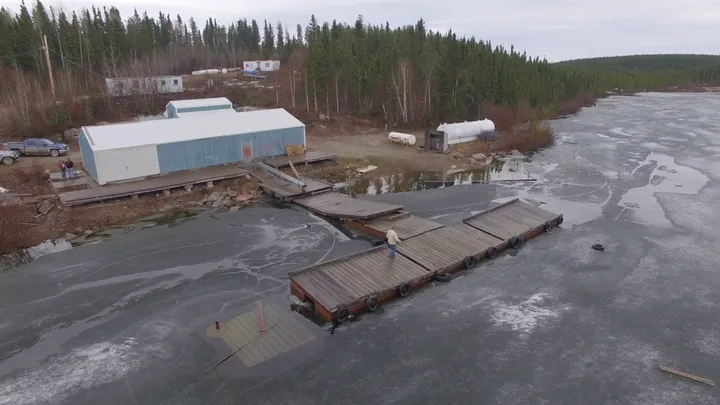
1913
First study of the hydro-electric potential of the Churchill and Nelson rivers is completed with involvement of the Federal government.
1966
Manitoba and Canada allow Manitoba Hydro to use Lake Winnipeg as a natural reservoir for Nelson River hydro-electric development.
1970
Manitoba issues Manitoba Hydro an Interim Water Power Act License for the Lake Winnipeg Regulation project.
1972
An Interim License under the Manitoba Water Power Act is granted for the Churchill River Diversion project. The license was revised in 1973.
1972
Supplementary interim license issued under the Water Power Act for Lake Winnipeg Regulation Project.
1976
Lake Winnipeg Regulation begins operation.
1979
Jenpeg Generating Station on the West Channel of the upper Nelson River in operation.
1986
Augmented Flow Program begins operation to optimize Churchill River Diversion operation.
2010
Manitoba Hydro submits a Final Water Power Act License renewal request.
2011
Clean Environment Commission asked (by Minister) to begin holding public hearings on Manitoba Hydro’s request for a final license for LWR.
2021
Churchill River Diversion Final Water Power Act License issued.
2021
Lake Winnipeg Regulation and Churchill River Diversion Final Water Power Act License issued.
2026
Churchill River Diversion Final License review – Manitoba Hydro and Manitoba have not tabled a meaningful process.
2026
Lake Winnipeg Regulation Final Water Power Act License expiry.
References